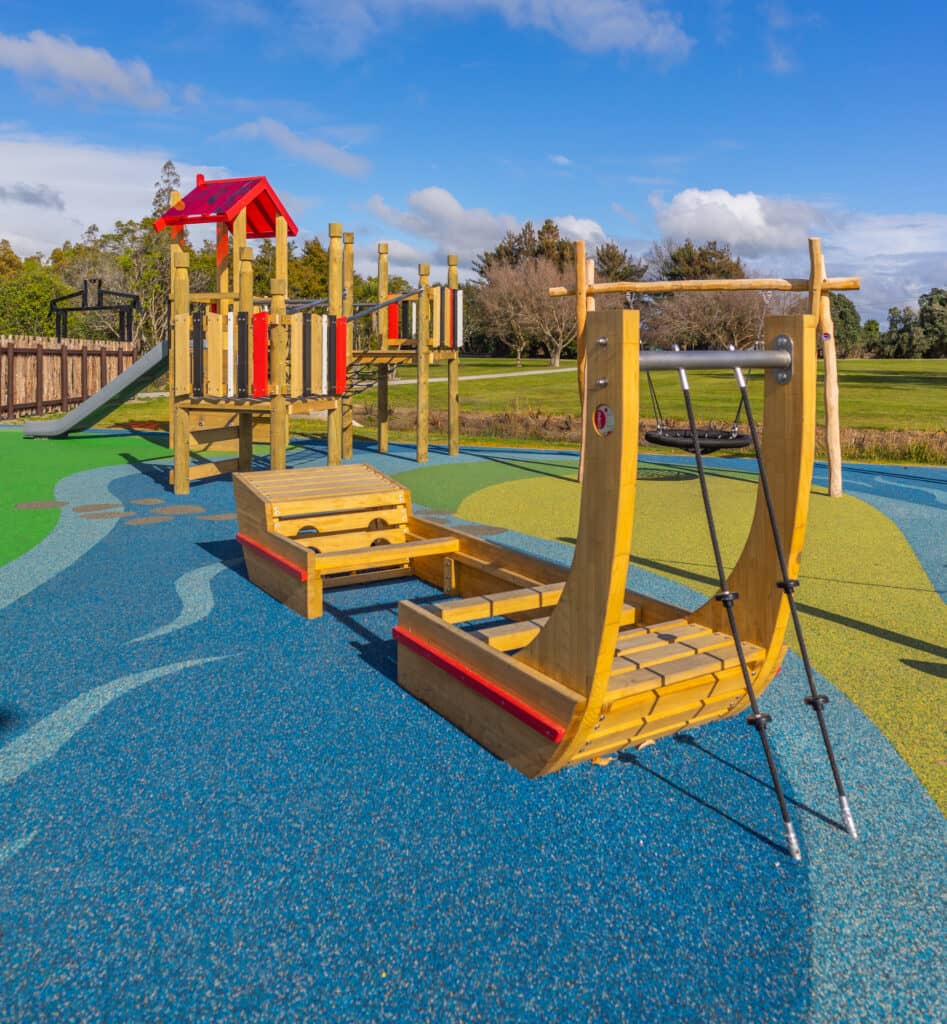A thematic playground design can be an excellent option for your space, offering kids a unique and imaginative play experience.
But without the proper planning, that dream playground can quickly become a design nightmare.
If you’re considering a themed playground, let’s explore the ins and outs to ensure your space is fun and functional.
What is a Thematic Playground Design?
Thematic playgrounds are play spaces that revolve around a specific theme or concept, designed to provide children with a more immersive and imaginative play experience.
These themes can be based on a variety of topics, such as literature, nature, history, fantasy, adventure, and many others. The chosen theme influences the playground’s design, equipment, and features.

How can Thematic Playground Design can be problematic?
Relevance Concerns
Pop culture is everchanging. Today’s superhero sensation might be tomorrow’s old news. A playground themed after fleeting trends might not stand the test of time.
Moreover, as neighbourhoods evolve, a theme once loved might no longer strike a chord. It’s like choosing a permanent tattoo based on a temporary mood.
Overemphasis on Theme
We’ve all seen it—playgrounds so dedicated to their theme that they forget their primary purpose: play. A dragon-themed slide is cool, but not if it’s too steep or scary for the little ones.
Overcomplication
Playgrounds should be inviting. Something is wrong if a child needs a map to navigate it or feels overwhelmed with too many structures. Simple joys often matter most.
Incoherent Storytelling
A story with too many twists can be confusing. Similarly, a playground with a mixed bag of themes feels scattered. And a scattered playground can lead to a scattered play experience.
Limited Play Value
Beauty without purpose is hollow. If we get caught up in making the playground look good but forget its function, we risk disappointing its primary audience: the kids.
How to Make a Thematic Playground a Great Space
Community Engagement
Before setting pencil to paper, talk to the community. Understand their stories, values, and dreams.
They can offer insights that make your playground resonate deeply and remain cherished for years.
Educational Potential
Beyond play, playgrounds can be classrooms under the open sky. Imagine a playground that looks like a medieval castle—while children play, they also learn about ancient history. Or a playground resembling a tropical jungle, sparking curiosity about wildlife and ecosystems.
Unique Designs
Every playground should have its charm. You can turn your playground into a beloved local landmark by introducing bespoke designs—maybe a unique tower or a whimsical sculpture.
Diverse Equipment
Stories have characters, settings, and plots. Similarly, a playground should have varied equipment, each telling a part of the story.
From swings and seesaws to mazes and climbing nets, a range of equipment can cater to kids’ diverse interests.
Age Considerations
Themes should be broad enough to attract all age groups. While a fairyland might captivate toddlers, adventure or mystery themes might be more appealing to older kids.
Inclusivity
Everyone deserves to play. Your thematic playground should be accessible and enjoyable for children of all abilities.
Ramps, sensory elements, and varied equipment can ensure no one feels left out.
Immersive Play
Deep immersion means that when children step into the playground, they feel like they’ve entered a new world.
Every corner should spark curiosity, every element should tie back to the theme, and the play should feel like an adventure.
Conclusion
Creating a thematic playground design is like writing a story; it needs heart, creativity, and an understanding of its audience.
While the path has challenges, the destination—a fun, engaging, and imaginative space for children—is worth every effort.
So, as you set out to design your playground, keep these tips in hand and remember that every good story and playground begins with a spark of imagination.





